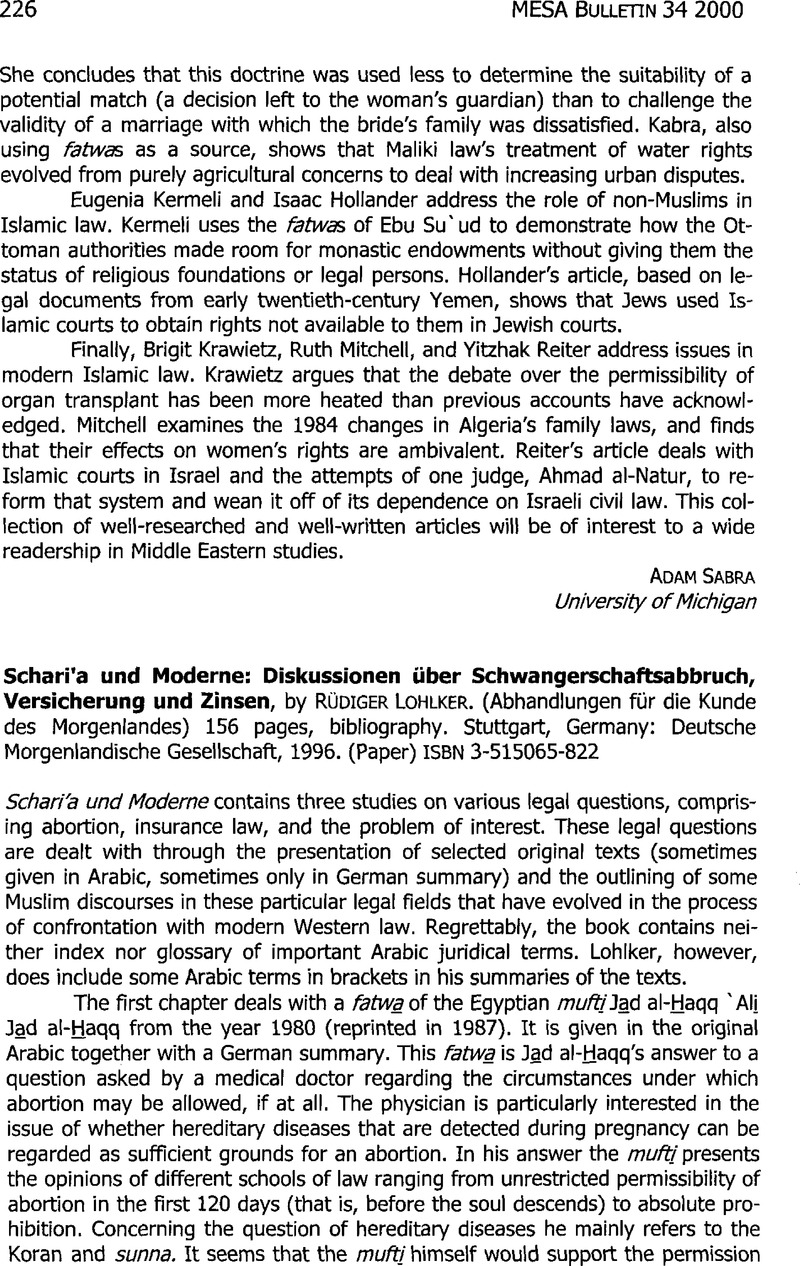No CrossRef data available.
Published online by Cambridge University Press: 09 March 2016

1 The arguments of Al-’Ashma̱wi̱ are interesting. He points out that riba̱ in pre-Islamic and early Islamic times led to the enslavement of debtors, as in the case of a debtor who was—according to a ẖadi̱th—sold by the Prophet as a slave. For the interpretation and dating of this interesting ẖadi̱th which is opposed to later Islamic law, see Schneider, Irene, Kinderverkauf und Schuldknechtschaft(Stuttgart, 1999), p. 74ff.Google Scholar which is an answer to Motzki, H., “Der Prophet und die Schuldner,” Der Islam 77(2000), p. 1ffCrossRefGoogle Scholar. Also see Schneider, Irene, “Narrativität und Authentizität: Die Geschichte vom weisen Propheten, dem dreisten Dieb und dem koranfesten Gläubiger,” Der Islam 77(2000): 84ff.CrossRefGoogle Scholar